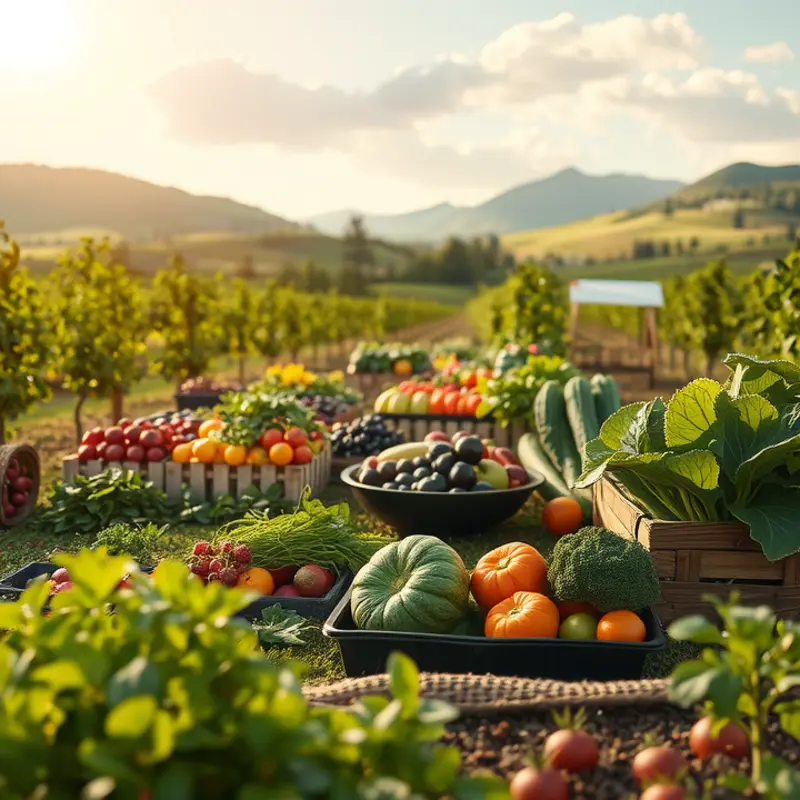Creating a zero-waste kitchen is an achievable goal that not only minimizes food waste but also fosters a sustainable lifestyle. By optimizing food storage, management, and creative usage, you can significantly reduce your kitchen’s ecological footprint. Let’s explore practical tips and strategies that make your kitchen a haven of sustainability without compromising on food quality or safety.
Optimizing Food Storage for Longevity

Effective food management begins with understanding how to store a variety of food types appropriately. Each food group has unique storage needs that, when met, help preserve freshness and nutrition, while minimizing waste.
Let’s start with fruits and vegetables. Ethylene-producing fruits, such as apples and bananas, should be stored separately from ethylene-sensitive produce like leafy greens to prevent premature ripening and spoilage. For leafy greens, wrap them in paper towels and store in a breathable bag to maintain optimal moisture levels. When it comes to root vegetables, a cool, dark, and dry environment ensures they stay fresh longer.
Grains and dry goods have their own set of storage conditions. Store them in airtight containers to protect against moisture and pests. It’s also important to keep these items in a cool, dark place. This not only extends their shelf life but also preserves maximum flavor and nutritional value.
Dairy products require special attention to ensure they last beyond their expiration date. Store milk on the fridge shelves, not in the door, to maintain a consistent, cold temperature. Cheese should be wrapped in wax paper and placed in a drawer to prevent it from drying out, while yogurt and butter are best kept on the middle shelves of the refrigerator.
Meats and fish benefit from being stored in the coldest part of the refrigerator, ideally in airtight packaging to prevent exposure to air. If freezing, divide them into meal-size portions to ensure easy defrosting.
The pantry can also play a crucial role in reducing food waste. Regularly check for nearing expiration dates and plan your meals accordingly. Organize items so that older products are always at the forefront, encouraging their use before new purchases.
To fully embrace a zero-waste kitchen philosophy, implement smart labeling. Label items with their purchase dates or, if repackaged, their expiration dates. This practice will keep your inventory under control and help you reduce spoilage.
For those exploring different diets, learning how to effectively store fresh ingredients can enhance the dining experience. For instance, check out the Mediterranean chickpea salad recipe where fresh ingredients contribute significantly to taste and nutrition.
Adopting these food storage strategies will not only minimize waste but also keep your ingredients fresher for longer, making cooking more enjoyable and sustainable. By optimizing the way we store food, we play a vital role in reducing household food waste and promoting a sustainable lifestyle.
Creative Ways to Prevent Food Waste

Transforming leftovers and repurposing food scraps can dramatically reduce kitchen waste. Start by embracing imaginative meal planning. Begin by assessing what you have and then build your meals from there. Prioritize using perishable ingredients first, integrating them into your dishes creatively. For example, turn those day-old roasted veggies into a hearty frittata or toss pasta with leftover sauce and whatever vegetables you have on hand.
Instead of discarding scraps, consider using every part of your ingredients. Broccoli stalks, for instance, can be shredded into slaw or added to soups. Carrot tops make excellent pesto, adding a fresh, vibrant twist to pasta or sandwiches. Stale bread doesn’t need to end in the trash; cube it for croutons or blitz into breadcrumbs, perfect for topping casseroles.
Utilizing preservation techniques like canning and fermenting is another effective strategy. Have a surplus of tomatoes or cucumbers from your garden or weekly shop? Transform them into sauces or pickles. Canning is not just about preserving food for later—it’s about enhancing flavors and making the most of your harvests. Similarly, fermenting can turn an excess of cabbage into sauerkraut, rich in probiotics and flavor.
Incorporate preservation into your routine by planning for these activities. Dedicate an afternoon to batch cooking or preserving. By merging meal prep and preservation, you ensure ingredients are used efficiently, minimizing waste. Fermented foods, in particular, harmonize beautifully with many diets, keeping meals varied and exciting. For inspiration, explore how fermented vegetables can complement a Mediterranean meal by checking out this fresh and vibrant Mediterranean Chickpea Salad.
Lastly, composting is an excellent way to handle unavoidable scraps. Rather than binning celery tops or onion skins, start a compost bin. This practice not only reduces waste but creates nutrient-rich soil, perfect for anyone with a garden. Even if space is limited, countertop compost bins or community composting programs offer beneficial options.
By adopting these creative strategies, every piece of food can have a purpose. Whether through transformation into delicious meals or by nourishing the soil, your kitchen becomes a hub of sustainable living, turning potential waste into continuous opportunity.
Final words
Adopting zero-waste practices in your kitchen not only helps reduce food waste but also fosters a deeper commitment to sustainability. By optimizing food storage and applying creative waste-prevention strategies, you can manage your kitchen efficiently while contributing to a healthier planet. Every small step counts, from repurposing leftovers to storing food properly. Embrace these practices to enjoy a more sustainable, waste-free kitchen life.







